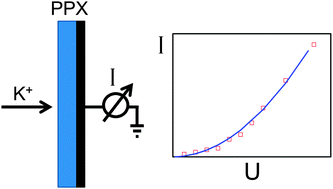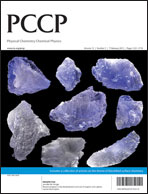Bombardment induced ion transport – Part III: Experimental potassium ion conductivities in poly(para-xylylene)
Abstract
The bombardment induced ion transport (BIIT) technique has been employed for studying the ionic conductivity of thin poly(p-xylylene) (PPX) films. The experiment is based on bombarding a PPX film with a c.w. potassium ion beam. The transport of ions through the film – which follows the laws of electrodiffusion – is detected as a neutralization current on the backside electrode on which the film has been deposited. This backside current scales quadratically with the acceleration potential of the ion beam and inversely cubically with the thickness of the film. This confirms theoretical predictions made in part I of this mini-series (Phys. Chem. Chem. Phys., 2011, 13, 20112–20122). This characteristic is markedly different from the Ohm-like current–voltage properties of a solid electrolyte, e.g. an ion conducting glass. The diffusion coefficient for K+ in PPX is determined to be 8.528 × 10−16 cm2 s−1 at 333 K. From the temperature dependence of the diffusion coefficient we conclude that a hopping mechanism with an activation energy of 2.74 eV ± 0.18 eV is operative.


 Please wait while we load your content...
Please wait while we load your content...